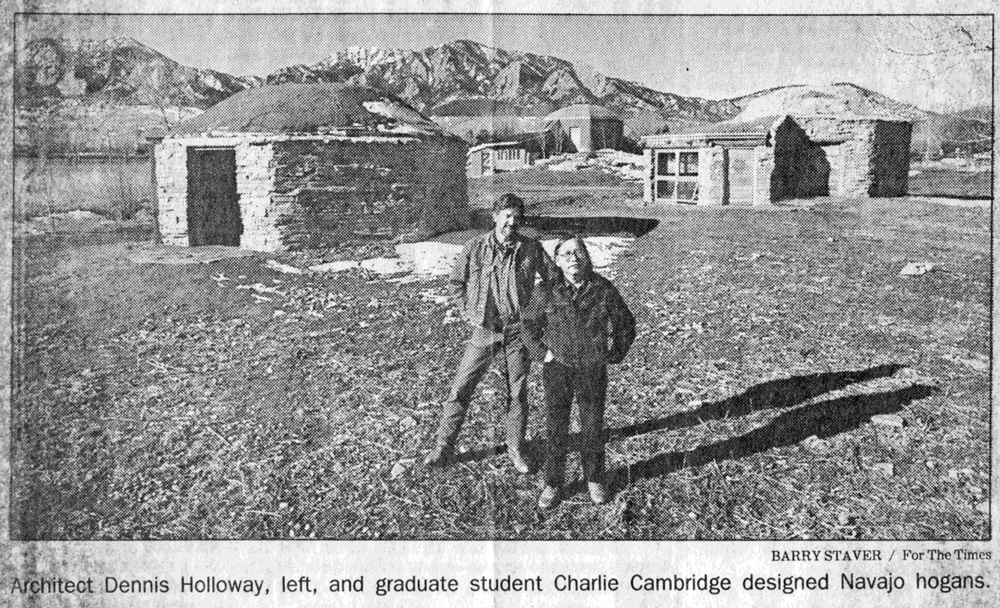
Colorado Solar Hogan Demonstration
College of Environmental Design, University of Colorado/Boulder, 1987-1990
This Project is a collaboration with Dr. Charles Cambridge
Publications: LOS ANGELES TIMES, February 26, 1990

From: Los Angeles Times, February 26, 1990, p. A14 AMERICAN ALBUM
‘Culturally relevant’ campus housing adds a technological twist to a Navajo Tradition. By Tamara Jones Boulder, Colo. – The newest campus housing at the University of Colorado features dirt floors, stone walls, mud roofs and a special place for visiting medicine men. “It’s a blending of old traditions with new technology,” says Charlie Cambridge, a graduate student in anthropology who wanted to update his people’s traditional dwellings to provide an alternative to cookie-cutter government housing on the huge Navajo reservation. The result is called “culturally relevant housing” and is now expanding—on paper, at least—to modern versions of igloos, tepees, Inca cliff dwellings and underground earth lodges. It began several years ago, when Cambridge, himself a Navajo, sketched his Hogan idea on napkins and began showing them around. Within the tribe, the initial response was: “That’s really cute, but the Navajo people want to be modern like everyone else,” Cambridge recalled. Finally, someone introduced him to Dennis Holloway, an architect at the university’s College of Environmental Design, Holloway, who specializes in solar housing, was intrigued. “The concept of passive solar energy—where a building is made to basically heat itself without artificial devices—is ancient,” Holloway said. “We’ve just forgotten it.” The pair visited reservations, solicited ideas from Indians and spent two years discussing the project every Saturday in a local coffeehouse. The university agreed to donate a piece of land, and with cash grants, donated materials and volunteer student labor, construction of the hogans began 18 months ago. They should be completed this semester. |
Ranging in size from a single 16-foot octagon to a deluxe 1,600 square-foot model with an indoor garden, the hogans have solar panels that enable them to be heated entirely by the sun. In the summer, the natural insulation of the hogan keeps the interior cool. Even the largest one can be built for under $70,000, Holloway said. Waterless toilets and propane appliances keep the hogans independent from utility companies. “The floors are earth because you sleep on the belly of the Earth Mother,” Cambridge said. [Stone] benches along the stone walls are the only furnishing, with a special spot carved out for medicine men to perform ceremonies. The hogans were all blessed by a medicine man last fall. Cambridge and Holloway would like to have Navajo students live in the hogans both as a cultural experience and to offer any suggestions about improving the design, which the two men hope to market to Indian tribes. Alternatives are to use the hogans as museums, cultural centers or a research center for minority housing. Holloway also hopes the project helps to revive interest in solar energy for all types of housing, a concept that stalled when Ronald Reagan Administration cut solar tax credits. The hogans, visible from U.S. 36, have attracted attention, and the interest in not limited to Indians. Said Holloway, laughing: “A lot of white people come through here and say: ‘I’ll put the grand piano here….’ ” |
|---|